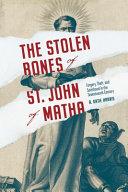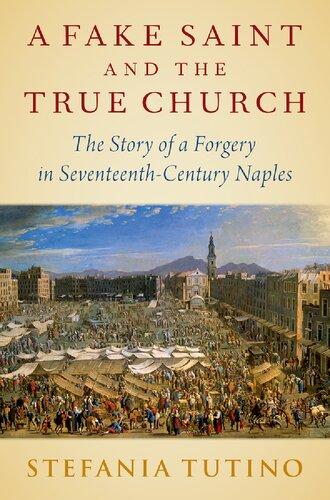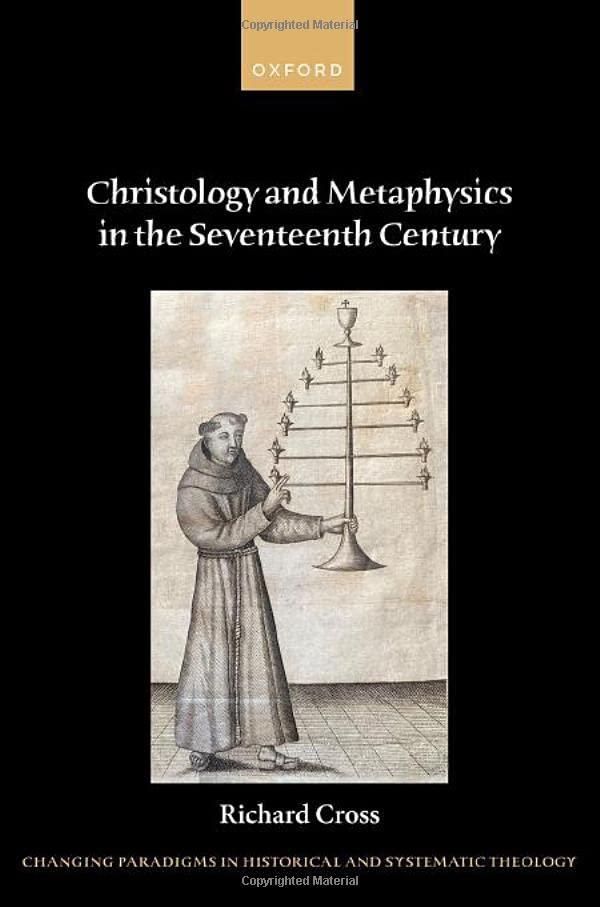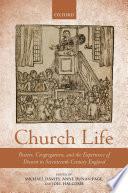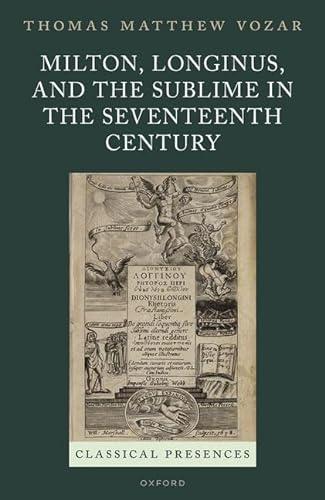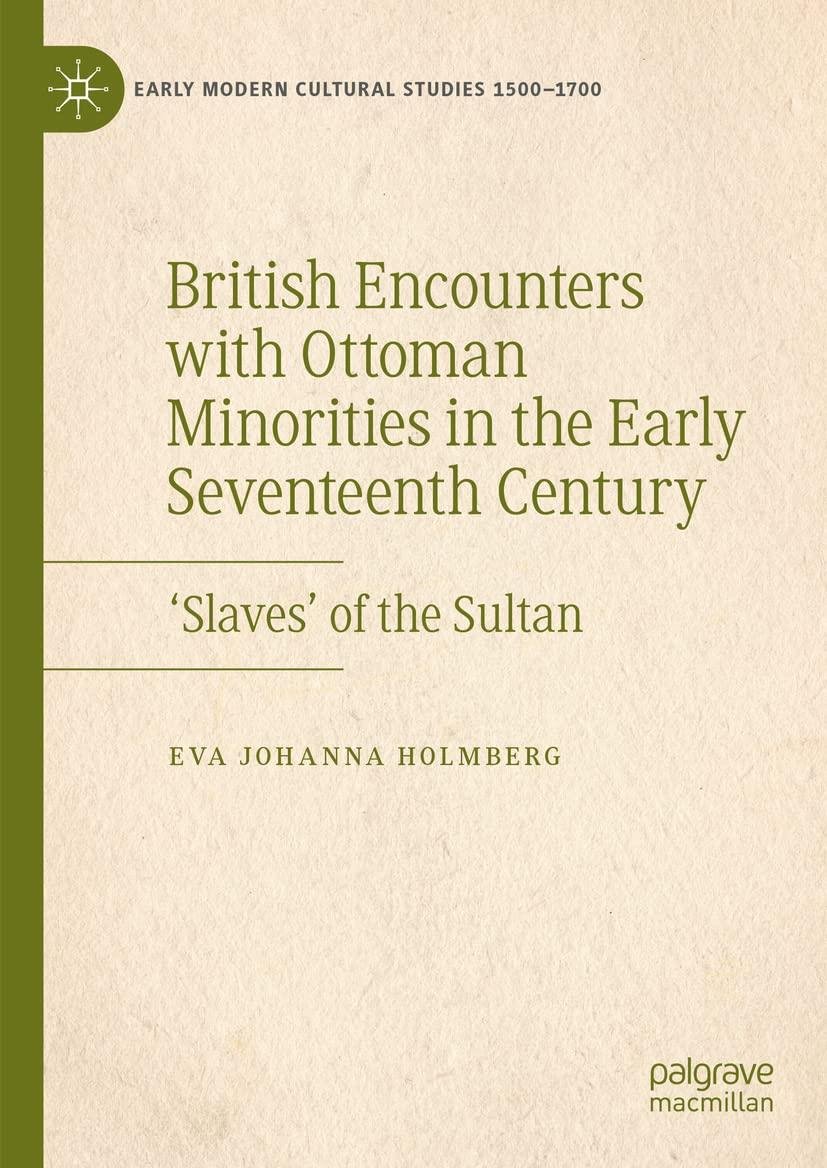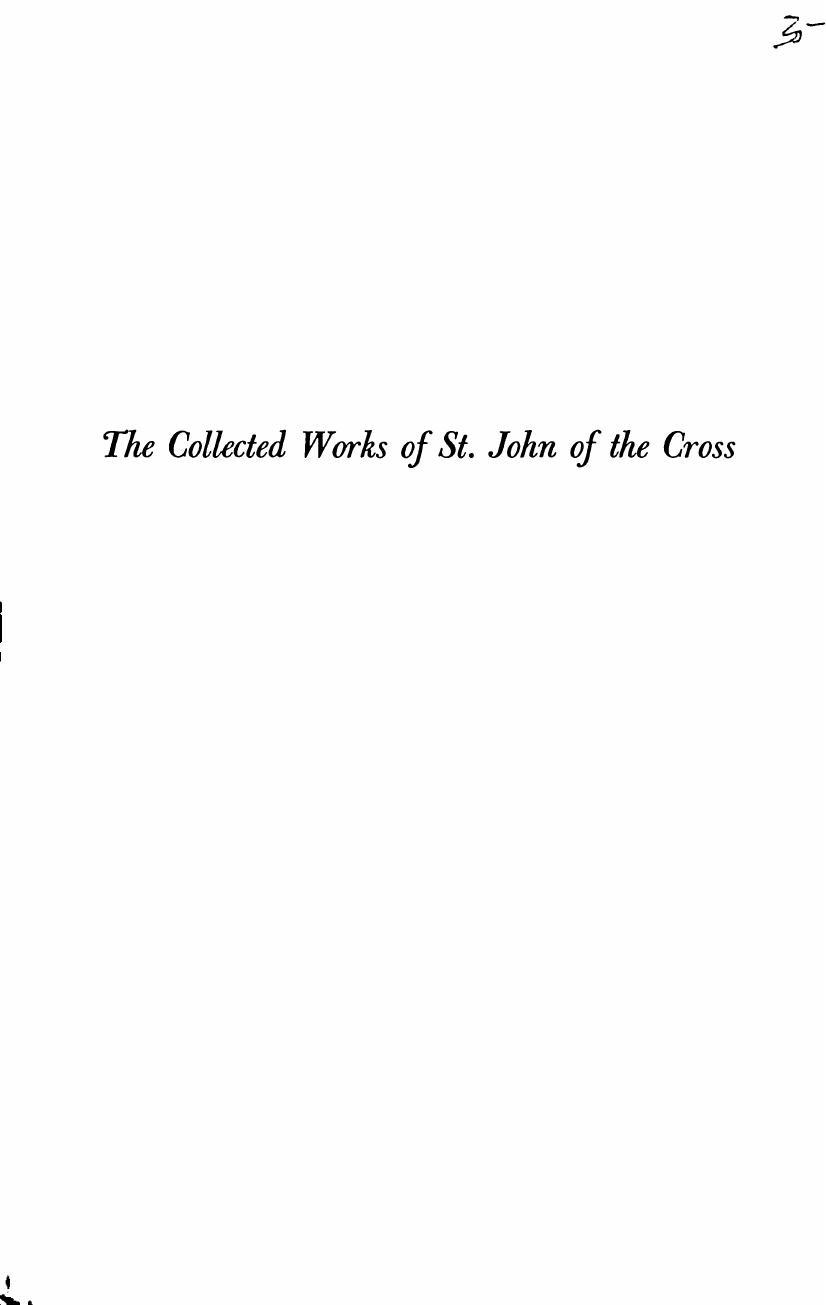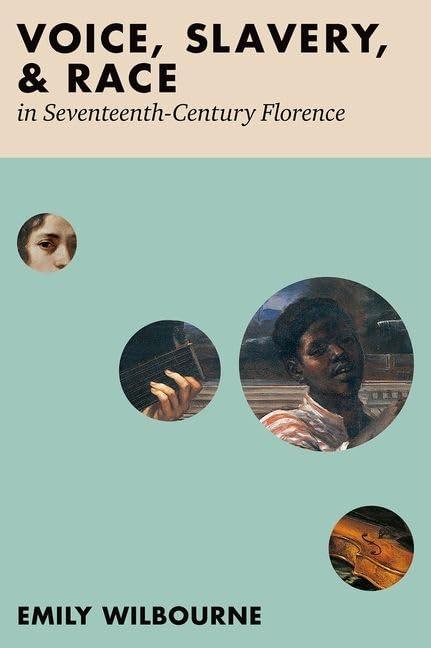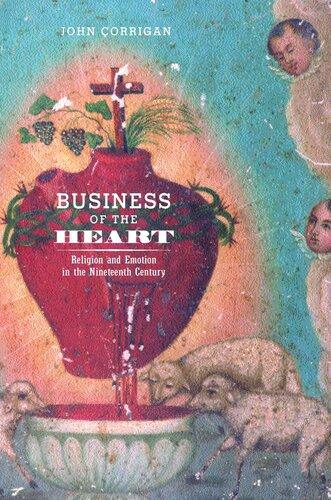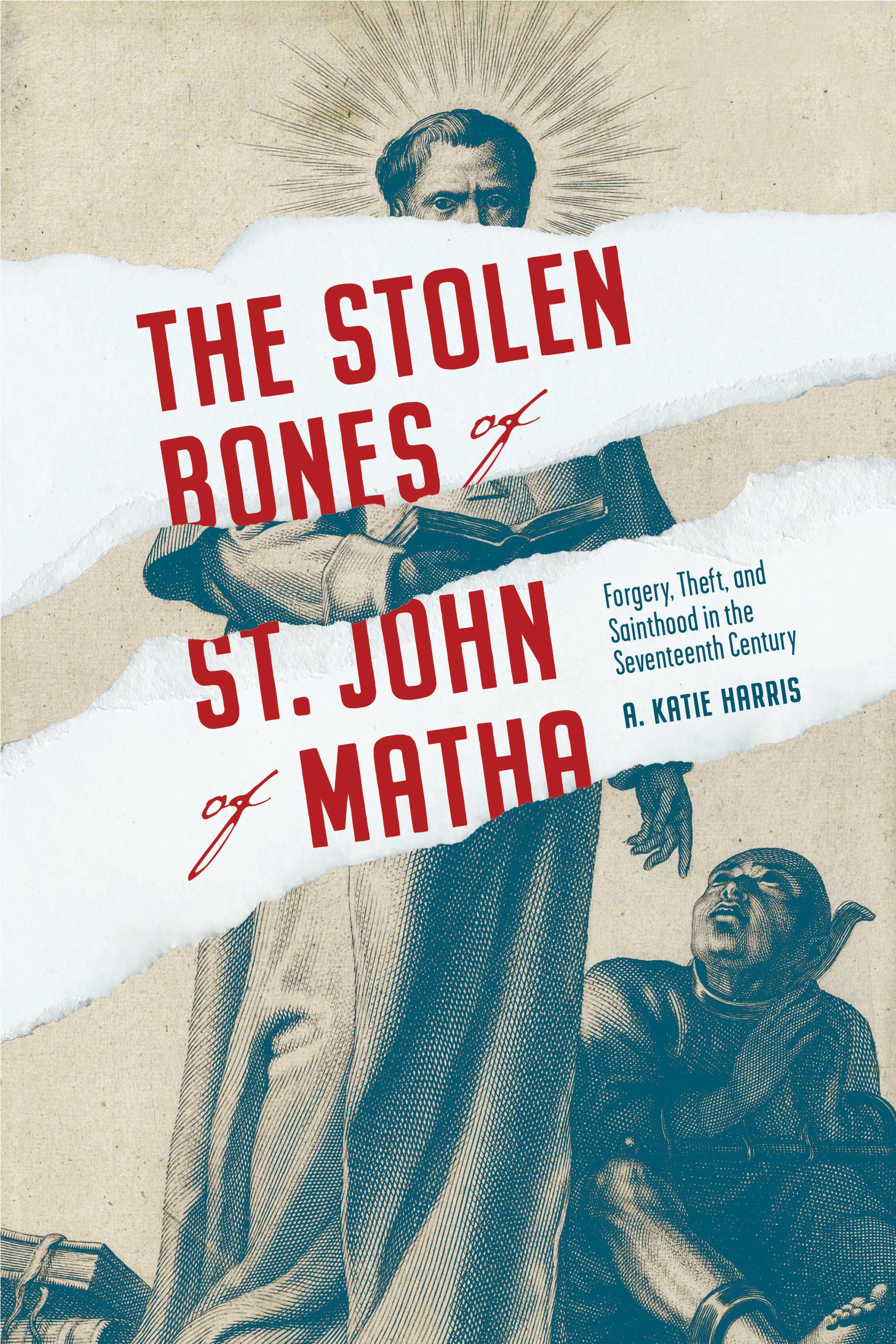The S T olen Bone S of S T . John of Ma T ha
Forgery, The FT , and Sain T hood in T he Seven T een T h Cen T ury a . Kat I e h arr I s The Penn S ylvania S T a T e
S i T y Pre SS Univer S i T y Park, Penn S ylvania
Library of Congress Cataloging-in-Publication Data
Names: Harris, A. Katie, 1969– author.
Title: The stolen bones of St. John of Matha : forgery, theft, and sainthood in the seventeenth century / A. Katie Harris.
Other titles: Iberian encounter and exchange, 475–1755 ; v. 10.
Description: University Park, Pennsylvania : The Pennsylvania State University Press, [2023] | Series: Iberian encounter and exchange, 475–1755 ; vol. 10 | Includes bibliographical references and index.
Summary: “Investigates an incident of holy relic theft in Rome, the lengthy legal case that followed it, and the larger questions that surrounded saints’ remains in seventeenthcentury Catholic Europe”—Provided by publisher.
Identifiers: LCCN 2023017660 | ISBN 9780271095356 (hardback)
Subjects: LCSH: Theft of relics—Italy—Rome—History—17th century. | John, de Matha, Saint, 1160–1213—Relics. | John, de Matha, Saint, 1160–1213—Cult. | Trinitarians— History—17th century.
Classification: LCC BX2333 .H37 2023 | DDC 235/.2—dc23/eng/20230614
LC record available at https://lccn.loc.gov/2023017660
Copyright © 2023 A. Katie Harris
All rights reserved
Printed in the United States of America
Published by The Pennsylvania State University Press, University Park, PA 16802–1003
The Pennsylvania State University Press is a member of the Association of University Presses.
It is the policy of The Pennsylvania State University Press to use acid-free paper. Publications on uncoated stock satisfy the minimum requirements of American National Standard for Information Sciences—Permanence of Paper for Printed Library Material, anSi z39.48–1992.
l i ST of i ll UST ra T ion S vii a cknowledg M en TS ix
Prologue: The Crime 1
1 Relics and Relic Culture in Early Modern Europe 5
2 “Well, If They Are So Ancient, What Saints Do They Have?”: St. John of Matha in Trinitarian Tradition 23
3 Forgery and Sainthood in the Seventeenth Century 57
4 Uncertain Saint: The Case Before the Congregation of Sacred Rites 107
5 “A Very Difficult Business”: Proving the Bones of St. John of Matha in 1715 and 1721 143 Epilogue 167
n o T e S 173
Bi B liogra P hy 197 i ndex 221
Illustrations
1. Mosaic at San Tommaso in Formis 42
2. Printed prayers and antiphons from the English breviary, 1649 83
3. Printed prayers and antiphons from the English breviary, 1649 84
4. Medieval breviary pages, date unknown 99
5. Medieval breviary pages, date unknown 99
6. Medieval breviary pages, date unknown 100
Acknowledgments
This book has taken too long in becoming. It has gone through so many false starts and so many different forms that I hardly know where to start. I owe so many long-standing debts of gratitude to so many people. I am very grateful to the granting agencies that supported the projects that eventually became this book: the American Academy in Rome, the Renaissance Society of America, the American Philosophical Society, and the Academic Senate of the University of California, Davis. Thanks are also due to the staff of the many institutions in Spain and Italy where I conducted the archival research on which this book rests. Special thanks to Fr. Pedro Aliaga Asensio, O.SS.T., who so graciously welcomed me into the Trinitarian house in Rome at San Carlino alle Quattro Fontane and granted me access to the exceptional materials housed in the archive there. This book took a lot longer than either he or I expected, and I thank him for his patience. Many thanks, too, to Fr. Javier Carnerero, O.SS.T., who facilitated my last-minute return to San Carlino. Monsignor Giancarlo Zichi and his friendly staff at the diocesan archive in Sassari were very kind and helpful. Corinna Ricasoli and her colleagues at Archivitaly helped me get access to critical materials in Rome at a time when the COVID-19 pandemic made international travel utterly impossible. The interlibrary loan specialists at the University of California, Davis, library were enormously helpful in getting me materials, while the staff at the Robbins Collection Library of the University of California Berkeley School of Law went above and beyond by granting me special temporary borrowing
privileges that made my work much easier. I am particularly grateful to the many libraries and archives around the world that have digitized their early modern materials and made them available to the public.
Portions of chapter 4 appeared in my article “Stolen Saint: Relic Theft and Relic Identification in Seventeenth-Century Rome,” in The Quest for Certainty in Early Modern Europe: From Inquisition to Inquiry, 1550–1700, edited by Barbara Fuchs and Mercedes García-Arenal (Toronto: University of Toronto Press, 2020), 159–97, and are reprinted here with permission of the publisher.
In the years that have passed since I first started the project that eventually morphed into this book, I have passed through more personal and professional highs and lows than I ever would have imagined when I started out. Some of my thanks are due to colleagues who helped me with questions and problems that developed in the course of research and writing; others are due to friends who lent me a hand in other ways: James Amelang, Emily Albu, Adam Beaver, David Biale, Jessica Boone, Brad Bouley, Liam Brockey, Joan Cadden, Ian Campbell, Michael Cuthbert, Vanessa de Cruz Medina, Simon Ditchfield, the members of the Association for Spanish and Portuguese Historical Studies email list, Jill Fantauzza, Barbara Fuchs, Mercedes GarcíaArenal, Ellen Hartigan-O’Connor, Lu Ann Homza, Michelle Leigh, Lisa Materson, Ean Murphy, Katrina Olds, Lorena Oropeza, Erin Rowe, John Rundin, John Slater, John Smolenski, Daniel Stoltzenberg, Kathy Stuart, Valentina Tikoff, Natalie Troxel, Stefania Tutino, and many others. Many thanks, too, to the audience members and commentators at seminars, workshops, and conferences held by the Johns Hopkins University, the University of Exeter, the University of Arkansas Fayetteville, the Pontificia Universidad Católica de Chile, UC San Diego, UC Los Angeles, UC Davis, UC Merced, the Huntington Library, the University of York, the Sixteenth Century Studies Conference, the Association for Spanish and Portuguese Historical Studies, the Mediterranean Seminar, the Renaissance Society of America, SHADYC (CNRS-EHESS, Marseille), TELEMME-MMSH (Université de Provence), and CARE (EHESS, Paris). Many thanks, too, to the two anonymous readers who read the manuscript, whose comments and critiques have made this book much better. I also thank Ellie Goodman and the amazing staff at Penn State University Press, who have done so much to bring this project to fruition. Needless to say, all responsibility for any errors lies wholly with me.
My deepest thanks goes to my family, who have helped me, supported me, and lifted me up, especially when things seemed very bleak indeed. My son, who has lived with this book his whole life, taught me that it is people, not
a C knowledgmen TS x
scholarship, that love you back. My sisters and their families critiqued chapters, helped me puzzle out translations, and patiently listened to me ramble on about topics that must surely have been very tedious indeed. My parents— all four of them—have helped me in more ways than I can count. They worked their networks and drove for hours to get me otherwise-inaccessible books. They emailed me articles and helped me think through key ideas and read through the manuscript with careful eyes and sharp red pencils. They rode to my rescue in times of trouble and caught me when I fell. Above all, my mother, Nancy Flowers, has been unwavering in her support for me and all my endeavors. Her love for me has been my rock. This book is for her.
Prologue: The Crime
On March 18, 1655, the eve of the feast of St. Joseph, at eleven o’clock at night, two Spanish friars, lay brothers of the traditional, or Calced, branch of the Order of the Most Holy Trinity and of the Captives, left their Roman monastery and hurried out into the night.1 Slipping quietly through the darkened streets, they made their way from their monastery, located in the Via Sistina near the Piazza Barberini, to the church of San Tommaso in Formis, almost three kilometers away on the Caelian Hill.2 The small church and its adjoining cloister had once numbered among the twenty privileged abbeys possessed by the Benedictines in Rome, but in 1209, the site was handed over by Pope Innocent III to St. John of Matha (ca. 1160–1213), the founder of the Trinitarian Order. The Trinitarians rebuilt the site (preserving in the process the first- century arch, or fornix, that gave the church its name) and constructed a hospital to serve the poor, the sick, and pilgrims to the Eternal City. By 1389, however, the friars had lost control of the buildings and the rents associated with them, owing in part to the order’s support for the antipope Clement VII (r. 1378–94) in the Western Schism. Since then, except for a brief period in 1572–73 and an even briefer one in 1605, the church was one of many properties possessed by the canons of the chapter of St. Peter at the Vatican, who in 1639 leased the church and its associated buildings to the ever- expanding urban villa of Girolamo Mattei, Marquis of Giove.3 Largely abandoned in a semirural sector of Rome, its hospital half in ruins and reduced to service as a granary, San Tommaso in Formis was a vulnerable target.4
Armed only with an iron pry bar, a flint and steel for striking a light, and a candle, Gonzalo de Medina and José Vidal scaled the garden walls that flanked the church but found the doors locked tight.5 They nearly abandoned their quest out of fear of making noise and being caught, but the discovery of a wooden ladder strengthened their resolve, and together they climbed it to reach the windows that provided light to the building’s interior. They ripped away the linen curtain that substituted for window glass and clambered into the church, bringing the ladder with them. Once inside, they struck a light. The flickering candle would have revealed that the walls of the little church were decorated with frescos commemorating their order and its primary ministry, the redemption of Christian captives in Muslim lands.6 Together, Vidal and Medina made their way toward a marble sarcophagus raised on pillars against one wall of the church and marked by an inscription that identified the tomb as that of St. John of Matha himself.7 Taking up the pry bar, Medina approached the tomb, but the sudden sound of three howls, like those of a dog, stopped him in his tracks. The two terrified friars extinguished most of their candles and sought out the source of the chilling sounds, but none could be found. “Brother,” said the panicked Vidal, “it must be that God does not wish us to take this holy body.” “Let us pray first,” replied Medina. The two offered prayers and vows and then set to work.
Using the iron bar, Vidal opened the tomb, creating a hole large enough to admit his head and an arm. Inside, he discovered not one but three bodies. The bones of the saintly founder of the Trinitarians were in the middle, set apart from the others, and on his skull was a handwritten prayer to the saint drawn from the order’s English breviary. On either side, pushed to the corners of the tomb and marked with identifying inscriptions, were the remains of John of England and Miguel Laínez of Spain, two of the order’s earliest generals.8 The two thieves noted that while the two generals’ bones were yellowed, those of St. John of Matha were unusually white and quite long. The friars venerated the remains and reverently kissed Matha’s skull and then proceeded to remove his bones, placing them in a hastily improvised sack fashioned from Medina’s woolen undershirt. They carefully replaced the pieces of the tomb so that it appeared intact and exited the church by the same window they had entered, taking care to return the ladder to its original location. Medina and Vidal again traversed the city under cover of night. This time, their route included a victory lap, as it took them past the church of San Carlo alle Quattro Fontane and the house of their rivals in religion, the Spanish brothers of the Discalced, or reformed, branch of the Trinitarian Order. Though it was the wee hours of the morning and a time when no bell
should be ringing, they heard a bell sound within the Discalced monastery, an event that the pious thieves interpreted as a miracle in honor of the saint whose remains they bore. Medina and Vidal returned, undetected, to their monastery and hid their prize in a chest in Medina’s cell. They then retired for the night, each taking a key to the chest.
For eighteen days, the friars kept their secret, but eventually news of the theft reached the ears of their superior, Pedro Arias Portocarrero, the Calced Trinitarians’ procurador general, or solicitor general at the papal court, who took possession of the remains. He ordered the two thieves to return to the church in order to retrieve the other two bodies and to leave in the tomb a note, written out and signed by himself, that explained and documented the removal of all three. He also prepared an identical copy of the note to accompany Matha’s bones.9 On the night of April 6, Medina and Vidal braved a dangerous thunderstorm to return to the church of San Tommaso in Formis. Despite the near disaster of Medina’s fall from the church window and the loss of a shoe, they accomplished the task, but in the process, they broke the lid of the tomb, a misfortune that ensured that the crime would eventually be discovered.10 Given the general neglect in which the church of San Tommaso in Formis languished, it was some days before the theft became known. By April 11, the archpriest of the Vatican chapter, Cardinal Francesco Barberini (1597–1679), had opened an inquiry into the affair, and by mid-August, Medina, Vidal, and Arias had been tried and convicted in the court of the cardinal vicar. On August 30, a warning was posted on church doors throughout the city of Rome and its district. The monitorio ordered the thieves to present themselves before the court within eighteen days and threatened penalties ranging from loss of status to prison, exile, and galley service for noncompliance.11 The culprits, however, were long gone. Fearing punishment, Medina and Vidal had left Rome for Naples shortly after completing the second theft. Arias fled with the remains to the safety of the hospital attached to San Giacomo degli Spagnoli, the Spanish national church, prominently located on the Piazza Navona.12 Having first entrusted the bodies of the two generals to the Spanish ambassador in Rome, Don Diego Tagliavia de Aragón y Mendoza (1596–1663), Duke of Terranova, Arias disguised himself as an Augustinian friar and sneaked out of the city to join his confrères in Naples. Together, the three boarded a galley and spirited the stolen bones away to the safety of Spain.13
By the thieves’ own account, their motives were pious. According to Gonzalo de Medina, the two friars had stolen the bones because they “were in a church that was not [Trinitarian], and did not receive the appropriate veneration, because the church [of San Tommaso in Formis] was half ruined [and] in an unpopulated area within the city of Rome.”1 Their crime was the product of a tradition of reverence for the bodies of the saints that was as ancient as the saints themselves. From the second century onward, members of the early Christian community gathered the remains of pious people martyred for the faith at the hands of hostile authorities and venerated them in remembrance of their sacrifice and of the promise of the coming Resurrection. By the fourth century, believers had overcome traditional taboos against touching the dead and began to parcel out the remains of martyrs, dividing them up and spreading them and their cults throughout the expanding Christian world.2 With the end of persecution in the fourth century, the profile of the saint shifted, and martyrs were joined by confessors, “not those who had died for their faith but those who had lived for it, in a heroic and resolute way.”3 As the cult of the saints blossomed over the succeeding millennium, so too did the veneration of their bodies, around which there developed a rich array of beliefs and practices. Bodily remains, corporeal relics, were accompanied by contact relics, bits of clothing or other objects that had been in intimate contact with the body of the saint, dust or oil from the tomb, or even water in which the saint’s holy bones had been washed. The most sacred and r eli C s and r eli C Cul T ure
most sought- after relics were those of Christ and his mother, but throughout medieval Europe, Christians enthusiastically venerated the bodies of saints both famous and obscure.
As these bits and pieces of the holy dead began to circulate, so too did fears about fraud and about distinguishing saintly remains from those of everyday Christians. Already in the early fifth century, St. Augustine worried about imposters masquerading as monks who peddled “the limbs of martyrs, if indeed [they are] of martyrs,” to the faithful.4 Seven centuries later, the historian Guibert of Nogent complained of the dangers posed to the laity by the veneration of dubious saints’ bones and decried those who profited from their credulity, while the stock comic figure of the corrupt cleric and his questionable relics found in late medieval writers like Chaucer, Boccaccio, and Masuccio Salernitano suggests that the problem persisted.5 Thus, the questions raised by the friars’ criminal act in 1655 were not new. While Medina and Vidal (and their superior, Pedro Arias Portocarrero) may have sought to ensure that their founder received proper veneration, their pious misdeed instead cast the very identity of the bones into doubt. Were the bones stolen from San Tommaso in Formis really those of St. John of Matha? And was the body now in Spain one and the same as that which had lain in the tomb? What of the bones of other saints—how certain could one be of the identity and authenticity of their remains? How was one to know and to recognize the bodies of the “very special dead”?6 Until Matha’s relics could be certified as truly belonging to the saintly founder of the Trinitarian Order, they could not be presented to the faithful as objects for devotion—a hindrance that could seriously affect the order’s public standing and impede its ability to gather funds to support its central mission, the ransoming of Christian captives from slavery in Islamic North Africa. The Trinitarian Order would now have to prove the identity of Matha’s stolen bones to the eagle- eyed members of the Congregation of Sacred Rites, the papal institution charged with overseeing the veneration of the saints and of their bodies. It would take three attempts and nearly seventy years for the order to win its case.
The uncertainties raised by Matha’s bones, and by all saints’ relics, took on a particular urgency in the context of the sixteenth and seventeenth centuries, as Protestant critiques shook the cult of the saints to its very foundations. Whereas Catholic humanists had sought to rein in superstitious practices and reform popular devotion, Protestant reformers were set on pulling down the entire edifice of traditional devotion to the saints and their remains. For Martin Luther, relics “ought long ago to have been condemned, even though there were some good in them,” since they were “without God’s
the stolen bones of st. john of matha
word neither commanded nor advised. It is a completely unnecessary and useless thing.”7 Jean Calvin went further, thundering against the veneration of relics as “the mother of idolatry.” It was an “execrable sacrilege,” he declared, to give worship to “dead and insensible creatures” rather than to “the one living God.”8 In towns and cities across Protestant Europe, reforming crowds swept the altars clean, pulling down images and burning and destroying the once-holy bones, sometimes ritually “disenchanting” them with parades and public expositions that parodied traditional acts of veneration.9
The response of the Catholic Church to the threat of Protestantism came in many forms, chief among them the ecumenical gathering known as the Council of Trent (1545–63).10 The council aimed to counter Protestant critiques by clarifying and affirming Church doctrine and by reforming beliefs and practices through the reinforcement of the borders between the sacred and profane. In 1563, the assembled prelates took up the question of the cult of the saints and of their relics. They affirmed the validity and importance of the saints and relics but also tasked bishops with regulating the cult:
All superstition must be removed from invocation of the saints, veneration of relics and use of sacred images; all aiming at base profit must be eliminated; all sensual appeal must be avoided, so that images are not painted or adorned with seductive charm; and people are not to abuse the celebration of the saints and visits to their relic for the purpose of drunken feasting, as if feast days in honour of the saints were to be celebrated with sensual luxury. And lastly, bishops should give very great care and attention to ensure that in this matter nothing occurs that is disorderly or arranged in an exaggerated or riotous manner, nothing profane and nothing unseemly, since holiness befits the house of God.11
In the years and decades that followed, the council’s decrees were taken up and implemented by provincial councils and reforming bishops. In so doing, ecclesiastical officials found themselves forced to contend with the questions and doubts that could surround relics, especially those that were newly discovered or those, like the bones stolen from the little church in Rome, that were poorly documented or acquired by questionable means.12
The veneration of relics was but one part of the cult of the saints, one of Western Christianity’s most important forms of cultural expression. Like the faithful themselves, the saints were human, but they were understood to be a special class of people, extraordinary in their virtues and piety. They were also
seen as ideal examples of Christian living, role models for imitation. Though they were remembered for their exemplary lives, death marked not their ends but their beginnings, as they transcended its boundaries and linked Heaven and Earth both in their physical presence and in their continuing power as members of the heavenly assembly before the throne of God, with whom they interceded on behalf of the living. Whether they were martyrs for Christ or whether they were women and men who had lived lives of exceptional holiness, saints were invoked by Christians of all social levels and petitioned in times of need. They responded by working miracles, healing the sick, and saving the imperiled. Their stories were told and retold in hagiography; their images could be found in churches and chapels, homes and streets. People named their children after saints and left goods and property to them in their wills. They sought saints out in nearby shrines or traveled to distant pilgrimage centers, where they commemorated the saints’ interventions with votive paintings and wax images of body parts miraculously healed. People called on the saints for their aid before going into battle and childbirth or when seeking a cure or a lost sheep. The saints, in sum, were firmly interwoven with all aspects of medieval Christian social, religious, and political life.13
Relics and relic culture were not some morbid, marginal oddity of Catholic religious life; rather, they occupied an important position within the sprawling complex of beliefs and practices that surrounded the saints. Carefully stored in ornate reliquaries and housed in altars and shrines, relics were regularly sought out by petitioners seeking a cure and pilgrims fulfilling a vow. Cathedral churches and rich abbeys accumulated treasuries of holy bodies, and kings and emperors magnified their greatness with collections of priceless and powerful saintly remains. Other people, if they were wealthy and pious enough, wore tiny relics contained in pendants around their necks. People swore oaths on the bodies of the saints and carried them into battle; they transported the relics in processions of celebration and rogation. A gift of a relic could seal an important alliance or family tie, while a dispute over competing claims to a holy body could provoke much bad blood and wind up in court.14 Relics might also be acquired by means of furta sacra, holy theft, while others, lost or hidden, were discovered in relic inventios, inventions. Despite legal prohibitions on the sale or purchase of holy bodies, relics were also a commodity exchanged within an exclusive and often clandestine market.15
All of these practices rested on the relationship between the saints and their bodily remains. Unlike images, relics did not represent the saint’s likeness or recall her to memory—they were the saint and made her presence palpable in the here and now. Operating on a logic of pars pro toto, any
the stolen bones of st. john of matha
fragment made present the whole of the saintly body and thus the saint herself. In the words of the fourth- century bishop Victricius of Rouen, the whole of the saint resides in even the smallest shred, since “what is divine cannot be diminished, because it is wholly present in the whole. And wherever it is anything, it is whole.”16 In relics, the visible fragment made manifest the invisible whole. For this reason, its identity was of paramount importance, since what was venerated was not just anybody’s body, but that of the saint, because of the person that she had been and still was. “We do not venerate a lifeless body [of the dead saint],” said St. Thomas Aquinas, “for what it is in itself, but by reason of the soul which was once united to it and which now enjoys God; by reason also of God whose servants they were.”17
The concepts and customs surrounding the cult of the saints and their physical remains did not spring up fully formed but grew and changed over time, and for this reason, scholars of medieval and early modern Catholicism have long pointed to the saints as interpretive tools with which to understand broader dynamics within culture and society. Cults came into being and disappeared, were promoted or suppressed, in ways that reflected and responded to the changing concerns of each age. The wonder-working missionary saints of the early Middle Ages, for example, saints like St. Columba and St. Patrick, offer a window into the dynamics of Christianity’s expansion beyond the Mediterranean, while the emergence of lay female saints St. Marie d’Oignes and St. Francesca Romana can tell us much about the values and expectations of Europe’s increasingly city- centered society after 1200.18 The cult of relics, too, reveals much about the societies in which it took root. For example, the custom of swearing oaths on relics, a common practice in the ninth, tenth, or eleventh centuries, gradually gave way by the later Middle Ages to swearing on the Gospels, as an increasingly universal religious culture influenced more local and regional traditions.19 As Julia M. H. Smith has pointed out, “Relics were a small subset of much larger issues. On the one hand, they epitomized the weighty cultural meaning vested in saints and sanctity in early modern Catholicism as well as the deep anxieties surrounding them. On the other, they refracted long-term evolutions and tensions in western thought, as new forms of knowledge, changing modes of proof, and different methods of reasoning marked the transition from Scholasticism to Enlightenment.”20
In just this way, the uncertainties surrounding the identity of St. John of Matha’s stolen bones were representative of a broader collection of concerns and changes that surrounded holy bodies. In an age of persistent interconfessional conflict and reforming impulses both within and outside the Catholic Church, relics were a focal point for anxieties about fraud and forgery,
the boundaries between the sacred and the profane, and the relationship of human beings to the divine. As the physical remains of holy women and men, relics were inherently ambivalent: they were both things and people, both mundane and exceptional. Like another object of contemporary controversy, the consecrated Eucharistic Host, relics brought the material and the spiritual into a meaning-laden tension, and, like the Host, they concealed their holiness under their ordinary appearance. Removed from their ornate reliquaries and separated from their identifying documents or inscriptions, to the naked eye, there was little that distinguished a holy person’s remains from those of a common sinner. A few saintly bodies made themselves known through miracles, revealing the truth of their sanctity through their ability to move without human intervention, their healing exudate and unearthly light, their sweet smells and resistance to decay and, by extension, proving the Church’s claim to be God’s true institution.21 Miracles were not, however, unproblematic evidence of a bone’s identity, and most relics stubbornly refused to demonstrate their holiness. Just as one could not be sure of the identity of the remains said to belong to the Trinitarians’ founder, it could be difficult to be fully certain of the identity or authenticity of any of the relics held up to the faithful as those of saints.
These concerns overlapped with broader changes at work within the cult of the saints during the early modern centuries. While the saints and their remains remained as important in sixteenth- and seventeenth- century Catholic devotional life as they had been before Luther, new institutions like the Congregation of Sacred Rites and revived ones like the Inquisition reworked the standards for the creation of new saints and the veneration of existing ones. Their aim—to defend the Church’s ancient traditions while trimming back the exuberant excesses of popular superstition—drew on trends at work in other areas of early modern intellectual and religious life. New developments in philological and historical scholarship, for example, challenged traditional understandings of holy people and their bodies. In a push to craft a more solid, credible, and certain foundation for sacred history and for the Church’s claims to unchanging historical continuity, writers of hagiography, ecclesiastical history, and related genres adopted the new techniques, sources, and perspectives pioneered by Renaissance humanists. The destabilizing effects of these innovations on sacred history and on the veneration of the saints could be felt throughout the Catholic world, as Church leaders trimmed the liturgical calendar, suppressed doubtful cults, and reworked concepts of sanctity to fit the needs of a new, revitalized Catholic Christianity. Similarly, methods and modes of thought developed among
the stolen bones of st. john of matha
the practitioners of an increasingly empirical new science effected changes in the saint-making process, as doctors, surgeons, and even mathematicians were brought into canonization cases to assess critically alleged miracles and the bodies of candidates for sainthood.
Proving Identity Within a Culture of Relic Knowledge
The Stolen Bones of St. John of Matha examines the theft of the relics of St. John of Matha and its lengthy legal aftermath as a means of investigating the cultural meanings and anxieties invested in the relics of the saints and the changing modes of thought with which early modern Catholics approached them. Matha’s stolen remains and the almost seventy-years-long campaign to secure their identity offer a unique opportunity to open up and explore the questions that surrounded relic identity and authenticity in seventeenth- century Europe: How could one know whether an object said to be a relic of a saint truly belonged to that saint, and how certain did one need to be about that knowledge? How could one tell the remains of the saints from those of the common dead or, worse, from those of an animal? What kinds of evidentiary instruments could prove the identity and authenticity of an alleged relic? What kinds of knowledge could be brought to bear on holy bodies? Were miracles necessary or sufficient evidence, or were other proofs needed? In the coming chapters, I explore the changing ways in which early modern Catholics sought solutions to these uncertainties. I argue that the bodies of the saints were objects of a specialized knowledge, surprisingly understudied by modern historians, that had its own conventions, proof strategies, procedures, and values. Through a close study of the events and arguments surrounding Matha’s stolen bones, this book traces some of the contours of that knowledge.
In 1655, at the time of the theft, St. John of Matha (d. 1213) was not yet formally canonized. A product of the same evangelical ferment from which emerged such well-known saints as St. Francis (d. 1226) and St. Dominic (d. 1221) and of the same climate of interfaith conflict that fostered the Crusades, St. John of Matha was a professor of theology in Paris whose visionary experiences drove him to found the Order of the Most Holy Trinity and of the Captives, aka the Trinitarian Order or the Trinitarians, a new religious establishment dedicated to ransoming Christian captives from slavery in Islamic lands. In the centuries that followed, his spiritual sons and daughters of the Trinitarian Order committed their energies more to their charitable mission than to venerating their founder. By the late sixteenth century, however, the
Trinitarians were increasingly claiming Matha as a saint, and by the 1620s, this informal, uncanonized sainthood had become an embarrassment. The order’s leadership set the wheels in motion to win approval of his cult and, with it, papal affirmation of his saintly status.
The case to establish the identity of Matha’s stolen relics thus operated in tandem with the campaign to shore up his sainthood. The documentation marshaled to ensure Matha’s place among the company of the saints was critical to proving the identity of his remains, but the origins and authenticity of that documentation were themselves the subject of controversy. The Stolen Bones of St. John of Matha examines how the Trinitarians mobilized the past to achieve results in the present as chroniclers of the past crafted a new history for their order, a history based in no small part on an ambitious program of invention and forgery. Even as historians of all genres, including ecclesiastical history and hagiography, adopted new methods and evidentiary expectations, for some, forgery remained a resource, the disreputable handmaid to more legitimate forms of historical writing. In an era in which the process of saint-making was increasingly rigorous, legalistic, and grounded in written records rather than in other forms of proof, the Trinitarians’ reliance on forged documents and an imagined past was both typical and risky. This book uncovers the ways in which history and historical invention and forgery were created and deployed as a form of proof within the culture of knowledge around the bodies of the saints.
Early modern discussions of how questionable relics might be identified and authenticated pointed to many acceptable forms of evidence, many dating from the earliest origins of the cult of the saints in late antiquity. Commentators on relics laid out a wide array of possible indicators, ranging from divine revelations and miracles to pilgrimages and processions. In practice, however, seventeenth- century ecclesiastical authorities operated within a more restrictive regime of proof that favored what one writer of the time described as “human evidence,” that is, the physical appearance of the remains, multiple forms of textual and historical documentation, reliable witness testimony, and local traditions.22 These preferences, I argue, were representative of the tendency toward the centralizing, standardizing, and streamlining of sanctity and saint-making, a tendency that had already been slowly transforming the medieval cult of the saints since at least the twelfth century, when popes began to assert their exclusive right to judge and to declare just who may be venerated as a saint. The specialized culture of knowledge that surrounded the bodies of the saints reflected that transition in its blend of traditional and modern modes of thinking about and interpreting the evidence for sanctity.
the stolen bones of st. john of matha 12
The Stolen Bones of St. John of Matha maps out some of the key aspects of the culture of relic knowledge by exploring how the Trinitarians deployed lines of reasoning and proofs that met early modern evidentiary preferences while also situating them within older modes of knowing. The friars presented their case in multiple hearings between 1669 and 1721 before the Congregation of Sacred Rites. Through a close reading of the arguments presented before the congregation, I examine how the Trinitarians produced their proofs, which centered on the bones’ material qualities, their documentary support, their place within the order’s history and tradition, and the testimony of witnesses, and how the Trinitarians located their proofs within a framework of Scholastic concepts of individuation, identity, change, and persistence. I also consider how, when existing evidence was found to be inadequate, the friars produced new proofs by doubling down on forgery and their order’s invented history and by enacting carefully scripted acts of inspection and viewing that blended highly traditional methods of relic recognition with a pragmatic and empirical approach to the holy that reflected new trends at work in the broader intellectual culture of early modern Europe.
Because the Trinitarians’ arguments for the identity of Matha’s stolen bones depended on human testimony and human memory, it opened them to doubts about the credibility and certainty of their evidence. They sought to address those doubts by emphasizing another characteristic of relic knowledge, a lesser form of certainty known as “moral certainty.” A common feature on the scientific and philosophical landscape of the seventeenth century, moral certainty was regularly invoked in casuistry, moral and natural philosophy, law, and elsewhere. It offered an acceptance of doubt and an acknowledgment of the limits—but not the impossibility—of human knowledge. I examine how the Trinitarians applied moral certainty to the case of their founder’s remains, revealing in the process how the category accommodated the uncertainty and inherent ambiguity of relics.
Thinking with Saints
In recent decades, interpretations of the religious transformations of the early modern period have undergone a thoroughgoing sea change. Scholars have stepped away from older narratives grounded in a supposed gulf between a Protestant sphere that was “disenchanted” and modern and a Catholic sphere that embraced the magical and, by extension, a nonmodernity often dismissed as “medieval.” Similarly, models that presumed an opposition
between religion, especially Catholicism, and changes in science and medicine have largely been discarded. Studies on sanctity and sainthood and on closely related concepts like the miraculous and the demonic have repeatedly revealed the ways in which “religious authorities alternately collaborated with philosophers in studying the natural world, viewed natural philosophy as a separate sphere of knowledge, or, indeed, even opposed certain investigations into nature.”23 While Protestants largely discounted miracles, early modern Catholics promoted them as irrefutable signs of the Church’s supremacy and monopoly on truth. As recent scholarship has shown, miracles and other manifestations of the sacred were not accepted acritically; they required interrogation, testing, verification, and authentication, processes that overlapped with and participated in contemporary developments in natural science and medicine. For example, Fernando Vidal’s work on miracles explores the ways in which saint-making and experimental natural philosophy shared an understanding of the role of testimony in making knowledge, while Bradford Bouley’s recent study on autopsies performed on the bodies of candidates for sainthood in the sixteenth, seventeenth, and eighteenth centuries reveals how ecclesiastical officials brought recent developments in anatomy to bear on a means for knowing and recognizing holiness and how the Church looked to the expertise of university-trained physicians in interpreting the saintly body.24
Studies like these demonstrate how sanctity and sainthood were not merely products of the culture and society in which they were rooted; they were sites on which people could work out concepts and concerns, new ideas and nagging uncertainties. The saints, as Simon Ditchfield has suggested, were “good to think with,” for sixteenth- and seventeenth- century Catholics and for twenty-first- century historians alike.25 Holy people and concepts of holiness were one arena in which people contended with the pervasive crisis of certainty at work within early modern European culture. This was an age in which long- established certainties were brought into question. Unexpected continents, for instance, reworked the map, and the strange inhabitants of those continents occasioned doubts about how to interpret alien cultures. Likewise, encounters with the fauna and flora of distant lands and the new empirical methods being developed by scientists strained traditional natural philosophy to the breaking point. Religious upheaval transformed Truth into competing confessional truths, and Christians found themselves grappling with uncertainty about the relationship between truth and the appearance of truth and the discernment of the true from the false, reality from appearance, being from seeming.26
the stolen bones of st. john of matha 14
While contemporaries explored these issues in arenas that ranged from witchcraft trials and exorcisms of the demon possessed to concerns about counterfeit converts and handwringing about Machiavellian dissimulation, the saints and their bodies offered a particularly rich terrain on which to work out the uncertainties inherent in knowing and recognizing the sacred.27 In taking up the question of the early modern culture of relic knowledge, this book speaks to a growing literature on saint-related subjects, such as pretended sanctity; the many new cults that blossomed, waned, or were suppressed; and ideas about miracles and the miraculous.28 It also engages a growing body of work on early modern historical forgery, on hagiography and other forms of sacred history, and on the friction between historical and doctrinal truth.29 Relics have been largely incidental to these researches, however, and those few that have included the bodily remains of the saints within the scope of their analysis have focused mainly on the beati moderni, the recent holy dead under consideration for canonization. Most of the existing literature on relics deals with the medieval cult, rather than its early modern continuator, and to date, only a handful of scholars have plumbed the ways in which early modern Catholics investigated and authenticated the thousands upon thousands of ancient or medieval holy bodies scattered in churches and chapels across the Catholic world or uncovered in inventios. 30 This book builds on this small body of scholarship, using the case of St. John of Matha’s stolen bones to examine the largely unstudied regulatory and evidentiary regime that surrounded the early modern cult of relics. As key parts of the devotional landscape, relics and relic culture served as a critical proving ground on which early modern Catholics contended with the uncertainty that surrounded the discernment of the sacred and worked out their ideas about evidence, authenticity, and doubt.
Part of what made relics both fruitful and challenging to think with is their very material nature. The bodies of the saints were both wholly unique and utterly generic objects, and early modern Catholics struggled to contend with the fact that a relic was both sacred and mundane, that it was simultaneously a very special, very unique person and a very common object. The materiality of the relic was critical to its meaning and to its place in the lived religion of Catholics of all social levels. In this book’s exploration of the culture of relic knowledge, it participates in scholarship’s recent “material turn,” a turn to material culture and materiality as a way of opening up new questions, especially within the study of religion.31 In examining the arguments and practices with which the Trinitarian Order sought to establish the identity of Matha’s remains, this book uncovers some of the ways in which
the ecclesiastical authorities who crafted the culture of relic knowledge confronted relics’ very materiality and the tools and assumptions they brought to that encounter. I do not attempt, however, to address all of the practices and performances through which Catholics engaged with relics, nor do I claim to have encompassed the entirety of relic knowledge. Unofficial or lay modes of encountering the divine in the material remains of the saints, such as the production of little buns containing the ashes of martyrs, or liturgical practices, such as grand public relic displays on feast days, do not appear here much, for the simple reason that they did not figure in the evidence and arguments brought to bear on the case of St. John of Matha’s stolen bones.32 My hope is that these omissions will prove productive terrain for other researchers into the materiality of relics.
St. John of Matha and the Trinitarian Order in Contemporary Scholarship
For centuries, the Order of the Most Holy Trinity and of the Captives was a regular feature on the religious landscape throughout France and Spain (and elsewhere). Trinitarian monasteries were fixtures in many cities and towns, and Trinitarian friars regularly circulated among the population, collecting funds to pay for the ransoming of Christian captives. Given the order’s ubiquity, it is a bit surprising that it has not been the focus of much sustained scholarship. While the Trinitarians’ medieval past has been the object of important research by Giulio Cipollone and James Brodman, among others, the early modern period is comparatively unknown.33 There are a handful of older works, most notably those of Paul Deslandres and Antonino de la Asunción, that remain indispensable, and the more recent scholarship of Juan Pujana and Bonifacio Porres Alonso has shed new light on the order’s reform and of its redemptorist pursuits.34 A new wave of work on the Mediterranean slave trade has also brought the Trinitarians much deserved attention. Most recently, Daniel Hershenzon has explored the crucial role of the Trinitarian friars (among others) in the system of enslavement and redemption that bound together the early modern Mediterranean. His study, together with other recent works, makes clear the order’s centrality in the political economy of ransom.35 Beyond these, however, one finds a curious paucity of studies that focus in on the order and its inner workings, institutional culture, and ethos or on its connections with the society around it during the early modern centuries. And if secondary scholarship on the Trinitarian
the stolen bones of st. john of matha 16
Order is skimpy, sustained work on its cult of its founding father, St. John of Matha, is nearly nonexistent. The only real exception to this rule is the work of María Cruz de Carlos Varona, whose excellent 2005 doctoral dissertation on images and the veneration of Trinitarian saints in the Calced (traditional) Trinitarian monastery in Madrid has become a landmark in the order’s historiography. To date, only De Carlos Varona and Lisa Beaven have written about the theft that stands at the center of this book. The legal struggle that followed has never been studied.36
This state of affairs is due in no small part to the order’s fate in the upheavals of the late eighteenth and early nineteenth centuries. Unlike the Jesuits, the Trinitarians did not have a strong tradition of centralized administration. Rather, each monastery or convent seems to have undertaken the maintenance of its own papers, a responsibility that some houses seem to have fulfilled better than others. When the order was suppressed in France in 1790 and underwent exclaustration in Spain in 1835 or, in the case of England, was wholly dissolved in 1534, much documentation was destroyed or disappeared. Other records were probably lost when the traditional wing of the order went extinct in 1894 and its last remaining monastery was handed over to the Dominicans. As a result of these vicissitudes, state archives absorbed some of the order’s records, but the events of the eighteenth and nineteenth centuries, coupled with the wars, invasions, floods, fires, and other usual calamities of history, mean that it can be surprisingly difficult to write about the order’s past.
While many sources have disappeared, however, some have survived, and The Stolen Bones of St. John of Matha is closely based on a wealth of manuscript and printed material written primarily in Latin, Spanish, Italian, and French. Few of these materials have ever been examined by modern researchers. The lion’s share of the sources related to the case of Matha’s stolen bones are housed in the archive at San Carlino alle Quattro Fontane, the Trinitarian monastery in Rome. I found other materials in different repositories around the Eternal City, including the Vatican Library, the Vatican Archives, the Archive for the Congregation for the Doctrine of the Faith (i.e., the Roman Inquisition), and the Biblioteca Angelica, as well as in Madrid at the National Library of Spain and the Royal Academy of History. Due to the harsh realities of time and money and especially to the chaos created by the outbreak of the COVID-19 pandemic, some materials were entirely inaccessible, while others I could consult only in their digitized form. Thus, readers will also find cited manuscript material from libraries and archives that lie
